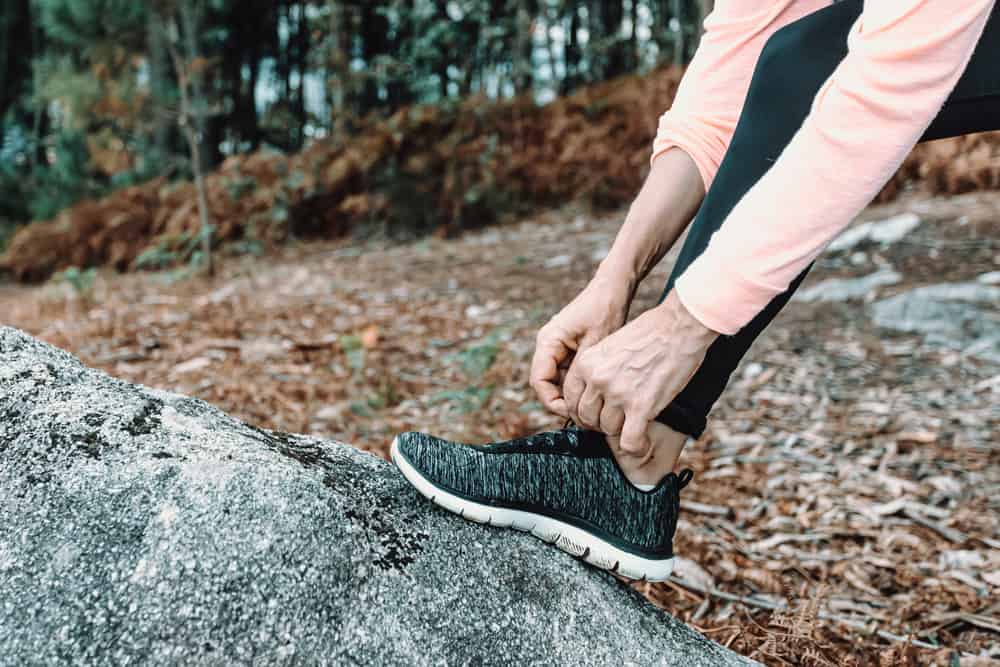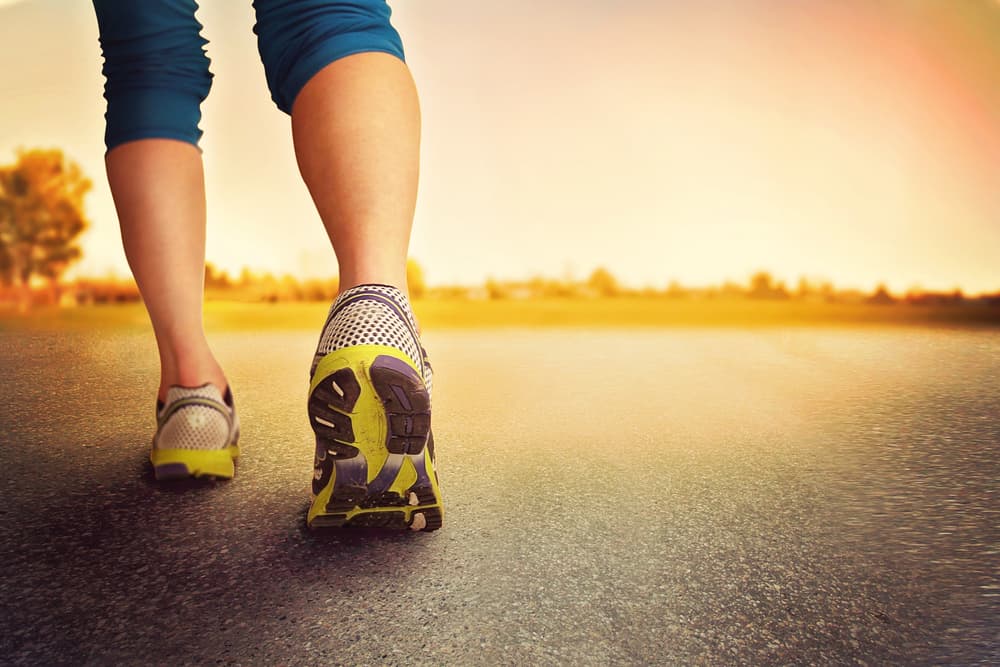Tennis Shoes
I am a tennis player and an avid runner. I had to do some research to find out if tennis shoes are good for running and walking. I can only afford one sports shoe at a time. My research and putting this theory to practice have led me to the following: Tennis shoes are perfect for running and walking, whereas running and walking shoes are dangerous when playing tennis.
Tennis shoes are designed with stability in mind. It needs to allow the foot to perform forward, sideways, stop-start, walking, sliding, and running movements. Seeing that running and walking movements are already incorporated in the design, tennis shoes are definitely perfect for running and walking. That is due to the added support found in the shoe.
The big difference between a tennis shoe compared to a running and walking shoe is the design of the midsole. The role of the midsole is to absorb shock, enhance support, and cushion your foot landing. Tennis shoes are designed with less cushioning. Tennis players like to feel connected to the court, so the midsole is not as prominent.
The Design Makes For A Good Running /Walking Experience
Tennis, running, and walking shoes are all designed to offer optimal cushioning to the athlete’s foot. The tennis shoe generally gives the wearer more protection than a running/walking shoe. This is because tennis players need more lateral support.
How A Tennis Shoe Cushions The Foot
Normally tennis shoes have less cushioning in the midsole area as it’s geared to provide more lateral support to the wearer. This design element is to allow the player to feel more connected to the court. Due to the frequent amount of sideway movements, direction changes, and sliding, the foot needs to be more horizontal than elevated when performing these acts, as it could lead to injury.
A very important factor to consider when buying a tennis shoe is the quality of the midsole. If the shoe lacks a quality midsole, it could lead to an uncomfortable experience on the court. This could lead to discomfort in the feet as well as the knees and other body parts.
The same outcome occurs when using the tennis shoe to run and walk. Below are some of the better midsole manufacturers and the technologies that they use;
- Asics : Gel Technologies
- Nike: Air Zoom Technologies
- Adidas: Boost Technologies
When using your tennis shoe to do running and walking exercises, my viewpoint is that the shoe will provide enough cushioning and stability to your feet (if bought from a reputable manufacturer). Your goal should always be to ensure that the shoe has a midsole made of high-quality material and that the shoe fits comfortably.
The Upper Of The Tennis Shoe
Tennis shoes require a stiffer upper when compared to running and walking shoes. High on a tennis player’s wish list is an upper that offers lots of durabilities, stability to the foot, and the whole foot’s protection.
This is more or less what a running shoe also requires, maybe with a little less focus on durability and designed with more breathable material. Let’s look at what some of the leading manufacturers have incorporated in their shoe designs to make their shoes lighter and more breathable.
| ASICS GEL RESOLUTION | Synthetic materials with mesh Base layer mesh wraps around foot Lightweight comfort & breathability Reinforced TPU rubber, wraps around forefoot Extra support & stability, when making aggressive cuts |
| ADIDAS UBERSONIC 2 | Knitted Uppers Sock light feel (resembles the feel of a running shoe) Molds over the foot Reinforced TPU |
| NIKE VAPOUR LINE | Fly knit design Lighter, more breathable material More cushioned upper |
| BABOLAT JET SHOE | Matrix Kevlar based knit upper Unique fit and feel, narrow fitted shoe Upper stretches out Kevlar build into weave, tons of support & stability |
As you can see, the materials used are geared to always strengthen the shoe and focus on making the shoe lighter and more breathable (Getting closer to the running shoe design with the added support and durability always present).
The Sole Of The Shoe
One of the most important parts of the tennis shoe is the outsole. Most tennis players play on hard courts (gritty cement surface). This is not so different from a surface as what runners run on, and most manufacturers offer a six-month durability guarantee on their outsoles.
The sole will sometimes curl up a bit to protect the shoe when sliding and dragging the foot on the court. This is also incorporated into some running shoe designs.
How Long Will A Tennis Shoe Last Normally?
The consensus is that it takes about 45-60 hours before the midsole starts to wear out. If you play an hour a week, you should replace them yearly, 6 months if you play 2 hours a week. Add 20 miles of running per week. You are then most likely to replace your shoes from anywhere between 4-6 months (300-500 miles).
Depending on the amount of your activity, the shoe will last anything from 3-6 months (very active) and 6-9 months (moderately active).

Are Running/Walking Shoes Good For Playing Tennis?
If you have money to waste and are looking for an injury to get off from work, yes. I have tried it once (luckily, no injury). However, the shoe did not support my feet at all when lateral movement was required. Also, wear and tear followed suit.
I had to chuck it in the bin after 3 sessions. The running shoe offered no improved ankle support, not enough heel cushioning, and lack of a toe guard made it a very unpleasant experience. Running in walking shoes is also not advised as the walking shoe design is too stiff.
Does The Weight Of A Tennis Shoe Affect A Runner?
Definitely, runners and walkers love light trainers. Most of them do not like extra pounds on their feet as the extra weight will slow them down and fatigue comes on faster.
Average weight
The average weight of a running shoe is 270 grams, going up to 300 grams as a maximum. Some famous record-breaking runners have used shoes weighing as little as 140 grams.
A tennis shoe’s average weight is 370 grams, going up to 450 grams easily, all depending on extra support being added to the upper. The major difference between the uppers of a running and a tennis shoe is the added bulk.
The price you will pay for choosing to run in a tennis shoe is the extra weight on your feet, leading to more fatigue and will add a few more seconds to your time. If you are a competitive runner who strives for quick times, then a running shoe will probably be your best buy. On the upside, running with a tennis shoe will protect your foot better and could prevent serious injury to a degree.
What Is The Foot Doctor’s Stance On This Topic?
The Doctors at The American Podiatric Medical Association recommend that you need to buy a sport-specific shoe if you participate in one sport regularly. In my experience as a tennis player and a runner, this makes sense. However, if your budget does not allow it, then the tennis shoe is the best option.
Related Questions
We have covered whether running shoes are good for walking and running, but here are a few more interesting things you should know.
What Is The Most Comfortable Tennis Shoe For Men?
Comfortability is a must for any tennis player. Add loads of stability and durability, and most will be a happy camper. Here is a list of some of the most comfortable tennis shoes for men. I should know as I have tried most of them.
- Babolat Jet
- Adidas Men’s Barricade
- Wilson Rush Pro 2.5
- Asics Gel-Solution Speed 3
- Nike Men’s Court Lite
- New Balance 806
- K-Swiss Hyper Court Express
I found that some were more comfortable than others, it all depends on the wearer and what comfortable feels like to them.
Who can benefit the most from running in tennis shoes?
This will include runners who have experienced stability problems previously—people who regularly end up spraining an ankle or tweaking their knees. A tennis shoe will add stability to a run.
Do tennis shoes work well in other sport codes?
A tennis shoe is probably the most versatile athletic sneaker in the world. Besides playing tennis in them, it translates favorably to running, basketball, other racquet sports, and also the gym. I have climbed Table Mountain with my tennis shoes on numerous occasions and it worked a charm.
Conclusion
I believe the most important factor when buying a tennis shoe, or any shoe for that matter is comfort. A comfortable shoe inadvertently helps with injury frequency reduction. Podiatrists view comfortability as the most important variable when it comes to shoes.
Only you as the wearer can confidently choose the best shoe for yourself. What works for one person will probably not work for the next, so if the shoe fits, be confident to try it out on the court and the road!
Running shoes are a good alternative to replace a walking shoe while running and walking shoes are a horrible alternative to stand in for a tennis shoe. So if you play tennis and love to run and walk as well, but can only afford one shoe, pick the tennis shoe. Game, set, and match!
